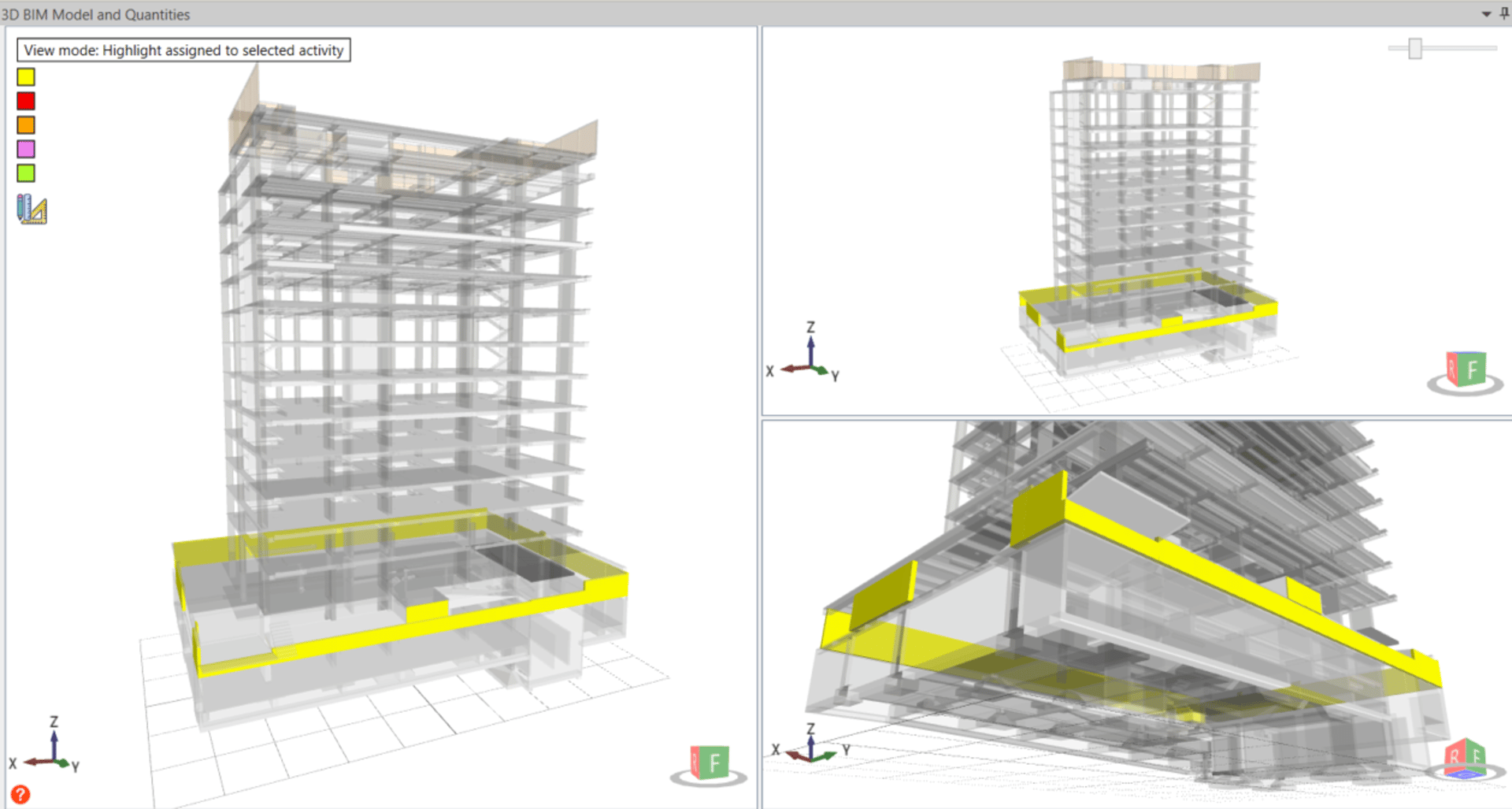
Skyscraper
Figure 2. Models in the federation
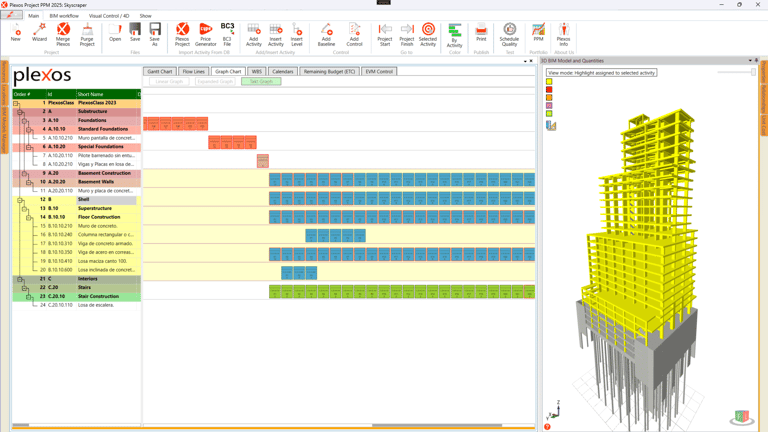

The objective of this example is that the user could analyze the following features:
Wizard with IFC federations (Figure 2)
Changing sub-activities execution order for a top-down construction process in A.10.20.210 (Grade Beams CIP)
The creation of sub-activities for daily cycles in activities A.10.10.210 (Foundations walls CIP) and A.10.20.110 (Piles CIP).
The execution sequence of chapter B.10.10 (Floor Construction).
Import unit prices from a Plexos cost database included in the example (Uniformat Costs DB.smartp).
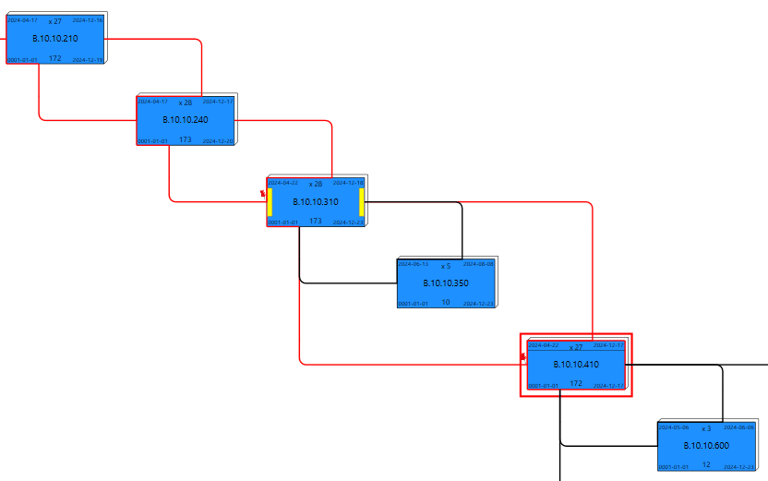

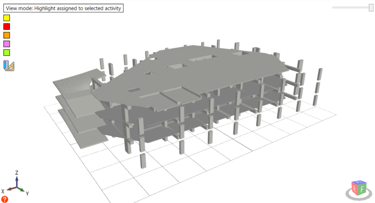

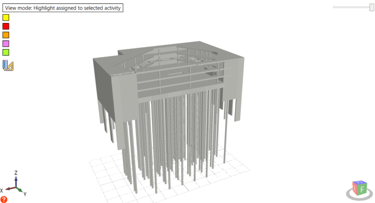

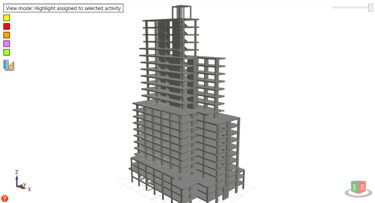

Figure 1. Example Project
The sequence of activity execution of chapter B.10.10 is as follows (Figure 3):
B.10.10.210 (Bearing Walls CIP) and B.10.10.240 (Columns CIP) executed simultaneously with SS(0%) and FF(0%) relationships.
The activity B.10.10.310 (Beams CIP) starts executed once 25% of B.10.10.240 has been executed.
B.10.10.410 (CIP Slabs one-way) is executed simultaneously with B.10.10.310 with SS(0%) and FF(0%) relationships.
Figure 3. chapter B.10.10 sequence
Additionally, to guarantee the correct execution between levels, although it's not necessary if the involved activities have the same durations, a relationship between the first sub-activity of B.10.10.410 (CIP Slabs one-way) and the second sub-activity of B.10.10.210 (Bearing Walls CIP) has been included (SS(25%)).
Activities in chapter B.10.10 are strongly interdependent, being a good practice to establish the bottleneck activity, in this case B.10.10.410 (CIP Slabs one-way), set the durations for its sub-activities, copy the activity, and paste it to the other activities with the option [Paste Overwrite durations] (Figure 4) guarantying a harmonious execution.
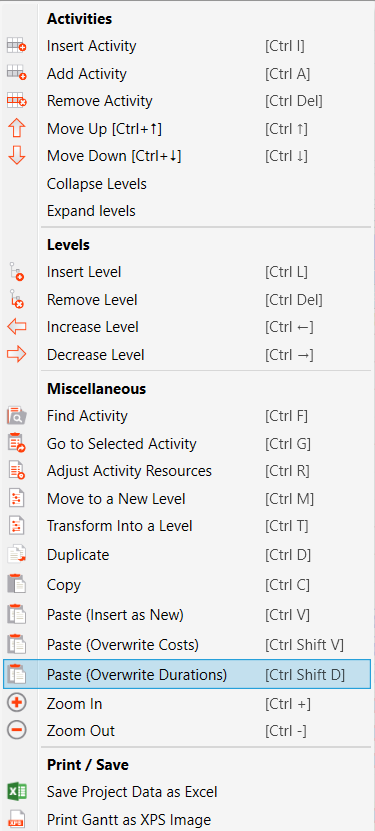

Figure 4. Context menu
We can let Plexos autonomously compute the activity durations, by subordinating durations and resource needs to the availability of the bottleneck resource (cto_moB.10.10.410).
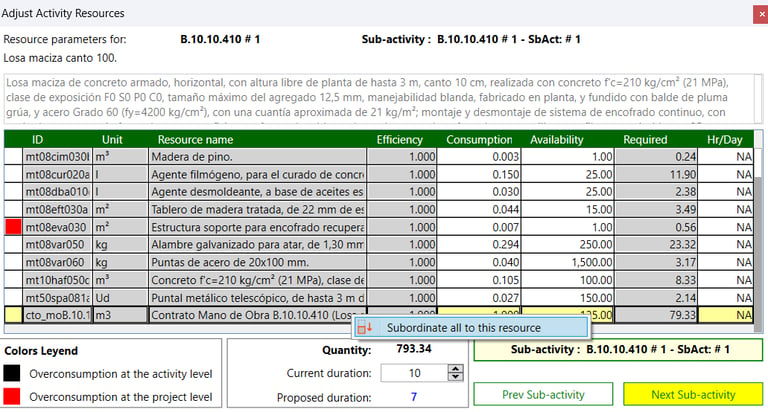

Figure 5. Subordinating to bottleneck resource.
Finally, for assigning the unit prices to the activities, follow the indications available in the document "Information Structure" section "Import / Update Project".
The project exposed in this example consists of a 27-story building, including three underground levels. The project model has been developed using a federation with three models (foundations, substructure, and superstructure), and Uniformat as classification system, with points to define level separations.


